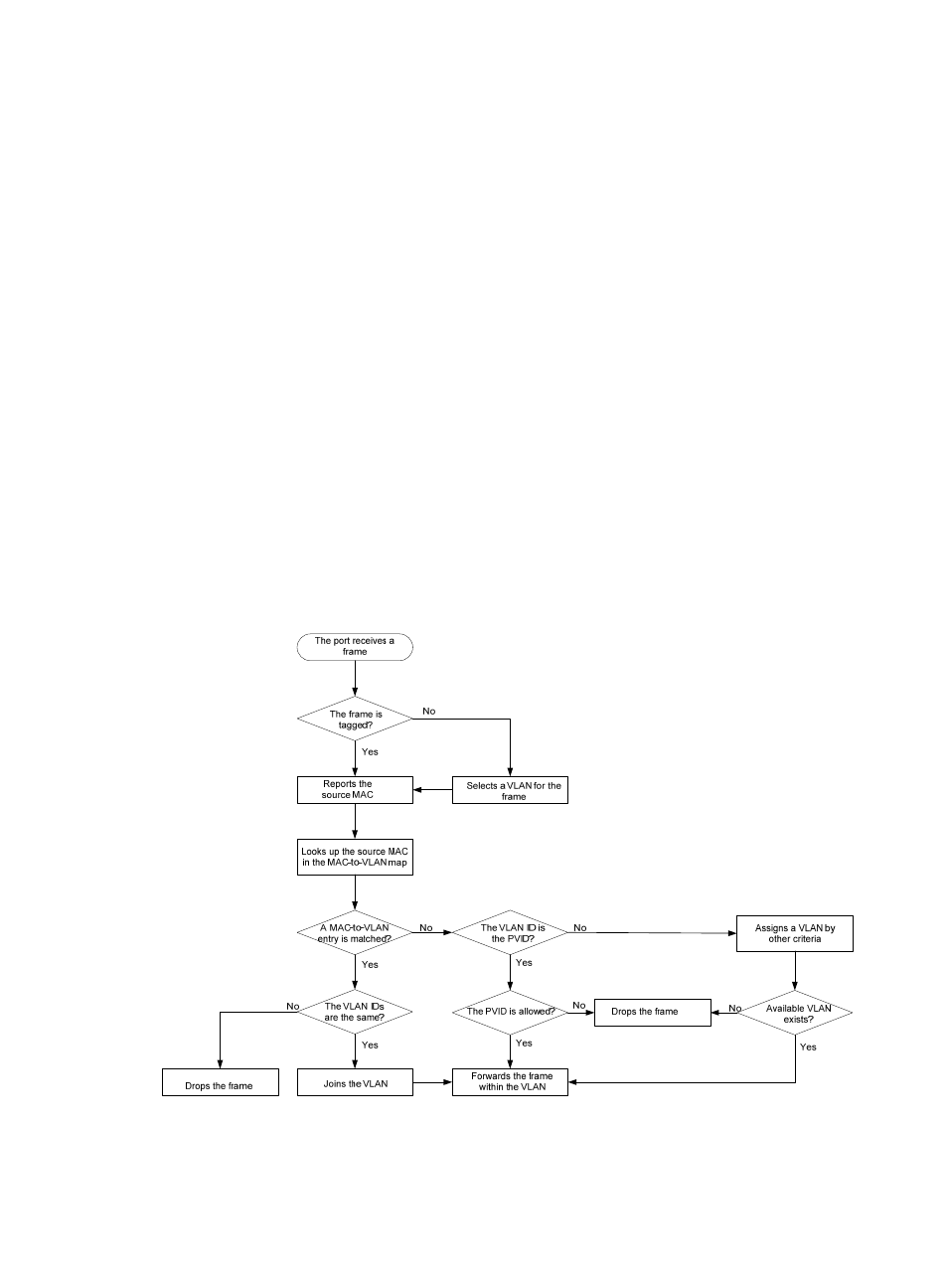H3C Technologies H3C S10500 Series Switches User Manual
Page 136

125
multiple MAC address-to-VLAN entries, and enable the MAC-based VLAN feature and dynamic
MAC-based VLAN assignment on the port.
Dynamic MAC-based VLAN assignment uses the following workflows.
1.
When the port receives a frame, the port first determines whether the frame is tagged.
•
If yes, the port reports the source MAC address of the frame.
•
If not, the port selects a VLAN for the frame by tagging the untagged frame with the PVID tag and
obtaining the tag, and then reports the source MAC address of the frame.
2.
After reporting the source MAC address of the frame, the port looks up the source MAC address
in the MAC-to-VLAN map, and processes the frame as follows:
•
If the source MAC address of the frame matches a MAC address-to-VLAN entry configured on the
port, the port checks whether the VLAN ID of the frame is the same as the VLAN in the
MAC-to-VLAN entry.
a.
If yes, the port dynamically joins the VLAN and forwards the frame.
b.
If not, the port drops the frame.
•
If the source MAC address of the frame matches no MAC-to-VLAN entry, the port processes the
frame depending on whether the VLAN ID of the frame is the PVID.
c.
If yes, the port determines whether it allows PVID: if yes, the port tags the frame with the PVID
and forwards the frame; if not, the port drops the frame.
d.
If not, the port assigns a VLAN to the frame by using other criteria, such as IP subnet or protocol,
and forwards the frame. If no VLAN is available, the port drops the frame.
Figure 40 Flowchart for processing a frame in dynamic MAC-based VLAN assignment